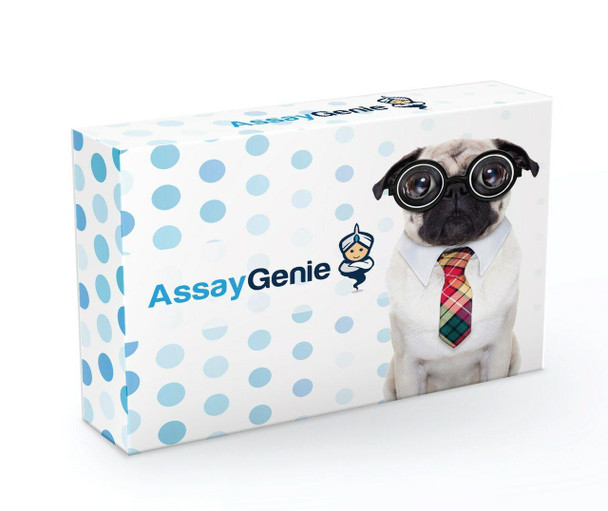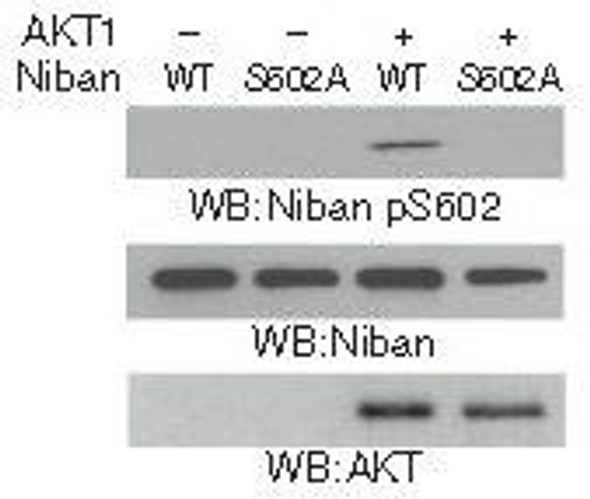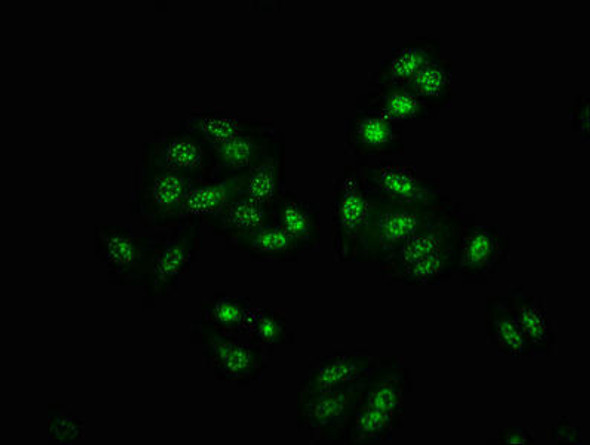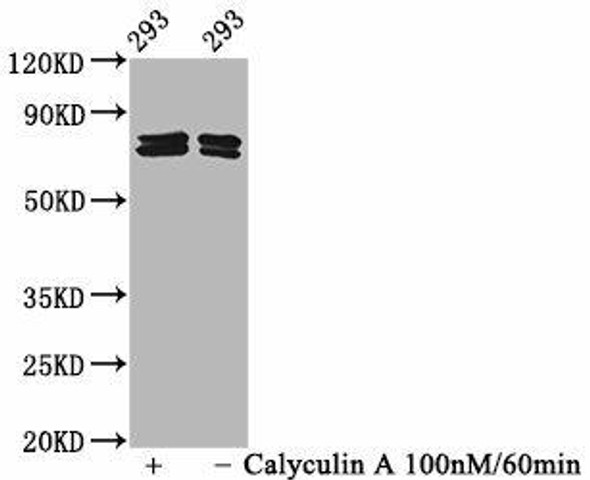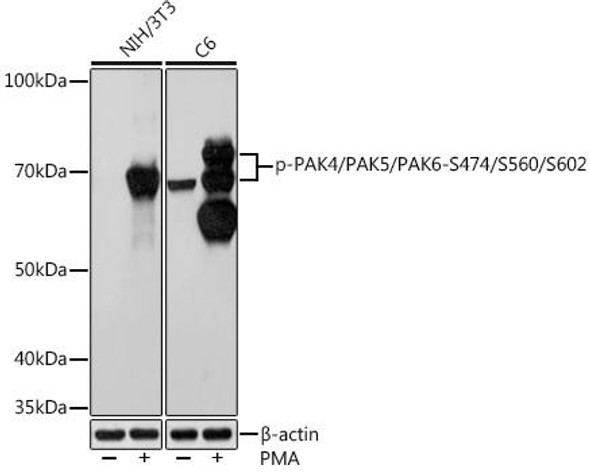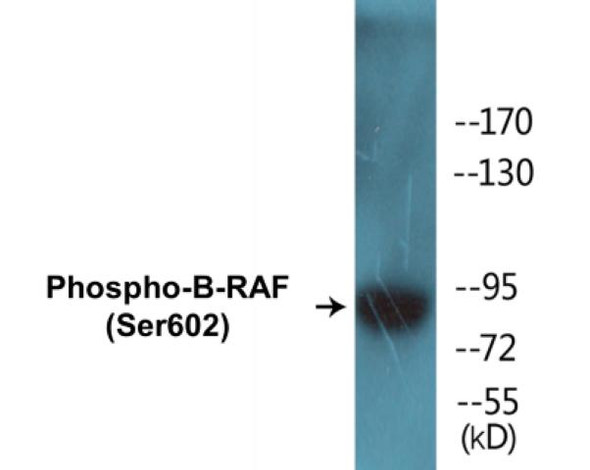Phospho-PAK7/PAK6 (Ser602/Ser560) Antibody (PACO24158)
- SKU:
- PACO24158
- Product Type:
- Antibody
- Reactivity:
- Human
- Mouse
- Host Species:
- Rabbit
- Isotype:
- IgG
- Applications:
- ELISA
- WB
- Antibody Type:
- Polyclonal Antibody
- Conjugation:
- Unconjugated
Description
Phospho-PAK7/PAK6 (Ser602/Ser560) Antibody (PACO24158)
The Phospho-PAK7/PAK6 (Ser602/Ser560) Antibody (PAC024158) is a valuable tool for researchers studying PAK7 and PAK6 proteins, which are members of the PAK (p21-activated kinase) family involved in cell signaling and cytoskeletal dynamics. This antibody, produced and validated for specificity in Western blot applications, specifically recognizes the phosphorylated forms of PAK7 and PAK6 at Ser602 and Ser560 residues, respectively.With its high reactivity to human samples, this antibody is suitable for investigations into the role of PAK7 and PAK6 in various cellular processes, including cell proliferation, migration, and survival.
By detecting phosphorylation events at these specific sites, researchers can gain insights into the regulation and activation of PAK7 and PAK6 in both normal and disease states.Given the implications of PAK7 and PAK6 dysregulation in cancer, neurodegenerative disorders, and other diseases, the Phospho-PAK7/PAK6 (Ser602/Ser560) Antibody presents an opportunity for advancing our understanding of these proteins' functions and potentially identifying new therapeutic targets. Its versatility and specificity make it a valuable asset for studies in cell biology, oncology, and neuroscience.
| Antibody Name: | Phospho-PAK7/PAK6 (Ser602/Ser560) Antibody (PACO24158) |
| Antibody SKU: | PACO24158 |
| Size: | 100ul |
| Host Species: | Rabbit |
| Tested Applications: | ELISA, WB |
| Recommended Dilutions: | ELISA:1:2000-1:10000, WB:1:500-1:1000 |
| Species Reactivity: | Human, Mouse |
| Immunogen: | Peptide sequence around phosphorylation site of Serine 602/560(R-K-S(p)-L-V) derived from Human PAK5/6. |
| Form: | Liquid |
| Storage Buffer: | Rabbit IgG in phosphate buffered saline (without Mg2+ and Ca2+), pH 7.4, 150mM NaCl, 0.02% sodium azide and 50% glycerol. |
| Purification Method: | Antibodies were produced by immunizing rabbits with synthetic phosphopeptide and KLH conjugates. Antibodies were purified by affinity-chromatography using epitope-specific phosphopeptide. Non-phospho specific antibodies were removed by chromatogramphy using non-phosphopeptide. |
| Clonality: | Polyclonal |
| Isotype: | IgG |
| Conjugate: | Non-conjugated |
| Background: | This gene encodes a protein that shares a high degree of sequence similarity with p21-activated kinase (PAK) family members. The proteins of this family are Rac/Cdc42-associated Ste20-like Ser/Thr protein kinases, characterized by a highly conserved amino-terminal Cdc42/Rac interactive binding (CRIB) domain and a carboxyl-terminal kinase domain. PAK kinases are implicated in the regulation of a number of cellular processes, including cytoskeleton rearrangement, apoptosis and the MAP kinase signaling pathway. The protein encoded by this gene was found to interact with androgen receptor (AR), which is a steroid hormone-dependent transcription factor that is important for male sexual differentiation and development. |
| Synonyms: | PAK5; PAK 6; kinase PAK6; |
| UniProt Protein Function: | PAK5: a protein kinase of the STE20 family. Predominantly expressed in brain. Capable of promoting neurite outgrowth, and thus may play a role in neurite development. Associated with microtubule networks and induces microtubule stabilization. Its subcellular localization is tightly regulated during cell cycle progression. |
| UniProt Protein Details: | Protein type:EC 2.7.11.1; Protein kinase, STE; Kinase, protein; Protein kinase, Ser/Thr (non-receptor); STE group; STE20 family; PAKB subfamily Chromosomal Location of Human Ortholog: 20p12 Cellular Component: mitochondrion; cytoplasm; nucleus Molecular Function:ATP binding; receptor signaling protein serine/threonine kinase activity Biological Process: cell proliferation; cell migration; apoptosis; cytoskeleton organization and biogenesis; locomotory behavior; learning; mitotic cell cycle; cell growth; signal transduction; protein amino acid phosphorylation; memory |
| NCBI Summary: | The protein encoded by this gene is a member of the PAK family of Ser/Thr protein kinases. PAK family members are known to be effectors of Rac/Cdc42 GTPases, which have been implicated in the regulation of cytoskeletal dynamics, proliferation, and cell survival signaling. This kinase contains a CDC42/Rac1 interactive binding (CRIB) motif, and has been shown to bind CDC42 in the presence of GTP. This kinase is predominantly expressed in brain. It is capable of promoting neurite outgrowth, and thus may play a role in neurite development. This kinase is associated with microtubule networks and induces microtubule stabilization. The subcellular localization of this kinase is tightly regulated during cell cycle progression. Alternatively spliced transcript variants encoding the same protein have been described. [provided by RefSeq, Jul 2008] |
| UniProt Code: | Q9P286 |
| NCBI GenInfo Identifier: | 12585290 |
| NCBI Gene ID: | 57144 |
| NCBI Accession: | Q9P286.1 |
| UniProt Secondary Accession: | Q9P286,Q5W115, Q9BX09, Q9ULF6, A8K5T6, D3DW14, |
| UniProt Related Accession: | Q9P286 |
| Molecular Weight: | 719 |
| NCBI Full Name: | Serine/threonine-protein kinase PAK 7 |
| NCBI Synonym Full Names: | p21 protein (Cdc42/Rac)-activated kinase 7 |
| NCBI Official Symbol: | PAK7 |
| NCBI Official Synonym Symbols: | PAK5 |
| NCBI Protein Information: | serine/threonine-protein kinase PAK 7; PAK-5; PAK-7; protein kinase PAK5; p21-activated kinase 5; p21-activated kinase 7; p21CDKN1A-activated kinase 7; serine/threonine-protein kinase PAK7 |
| UniProt Protein Name: | Serine/threonine-protein kinase PAK 7 |
| UniProt Synonym Protein Names: | p21-activated kinase 5; PAK-5; p21-activated kinase 7; PAK-7 |
| UniProt Gene Name: | PAK7 |
| UniProt Entry Name: | PAK7_HUMAN |

